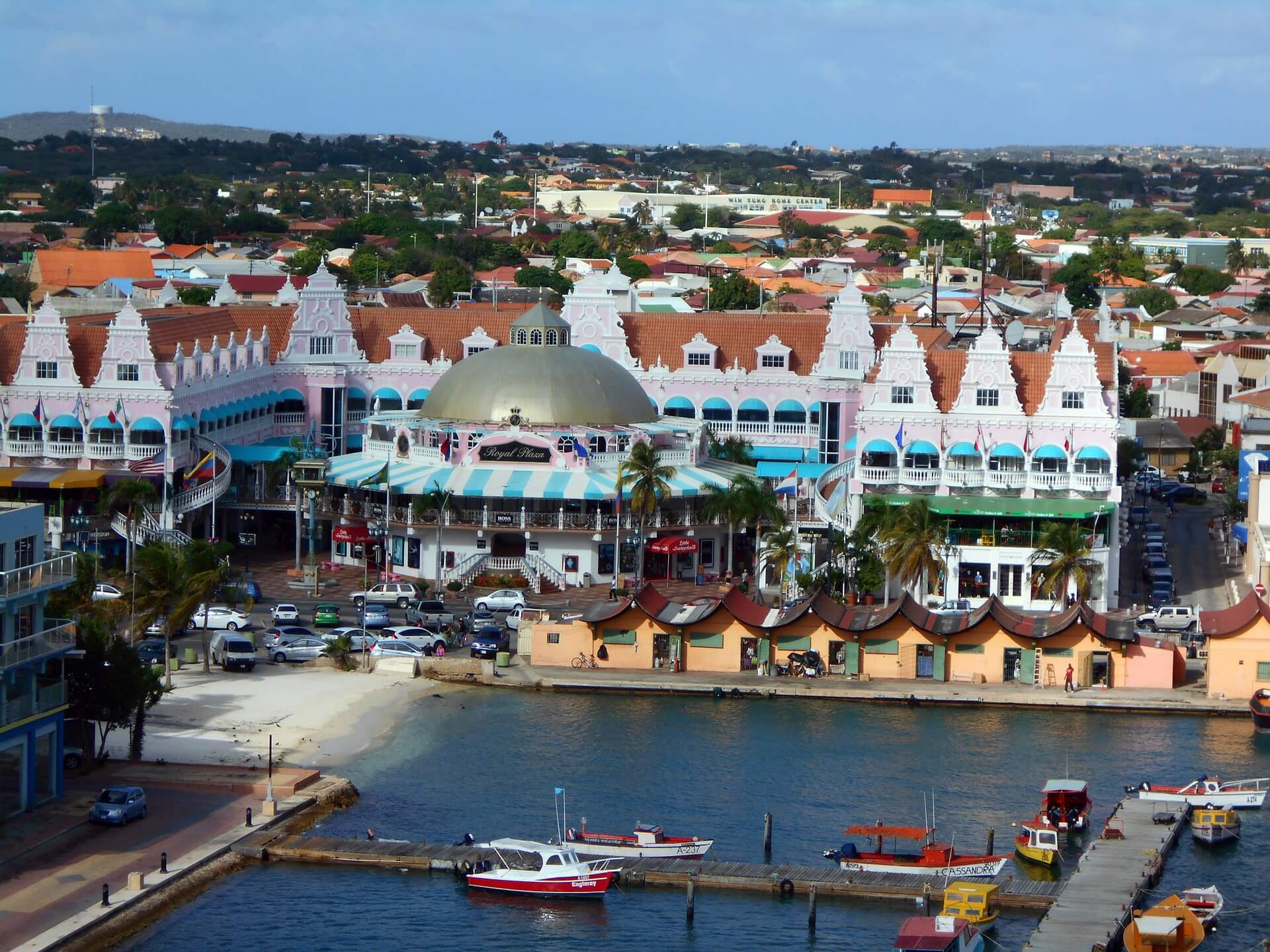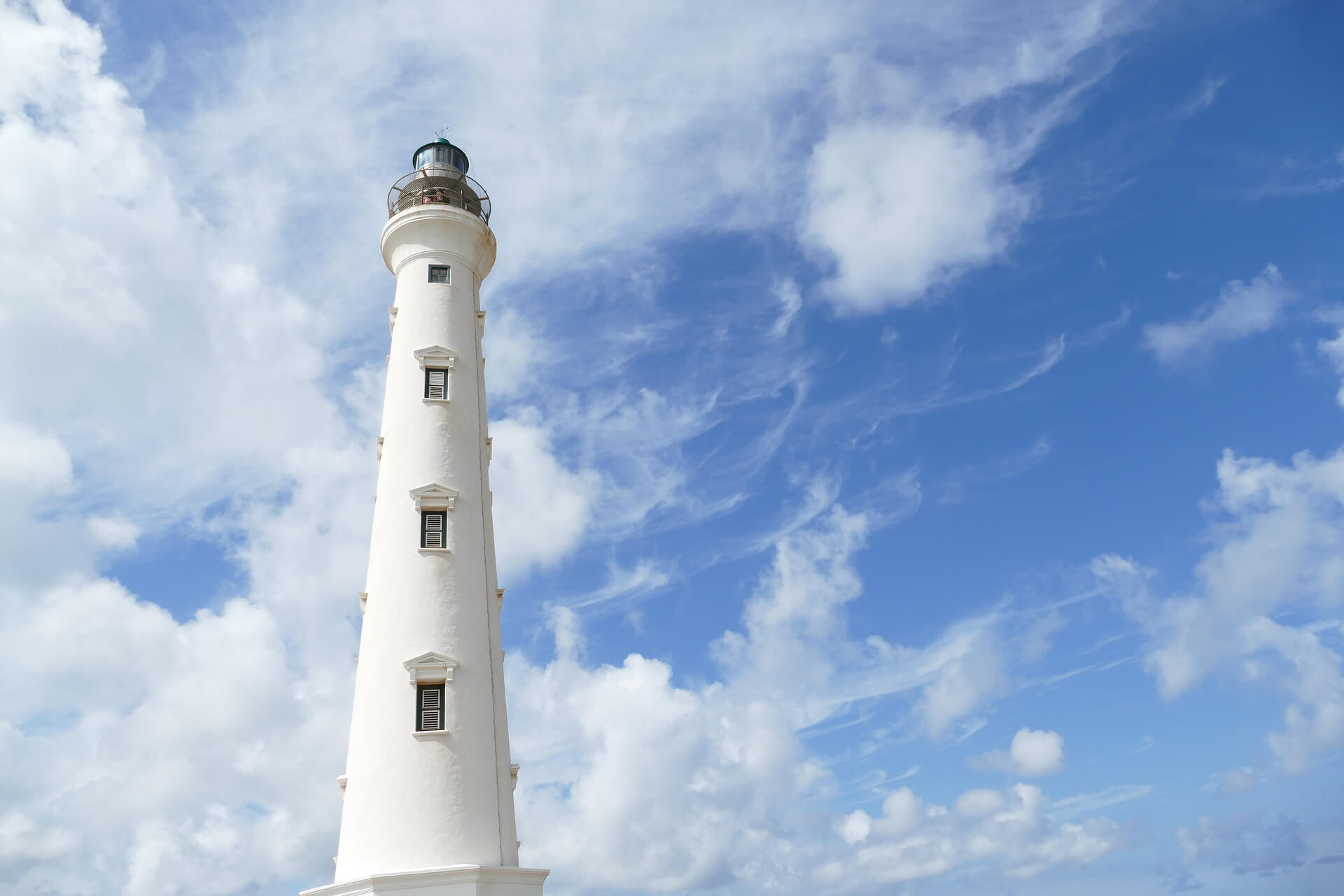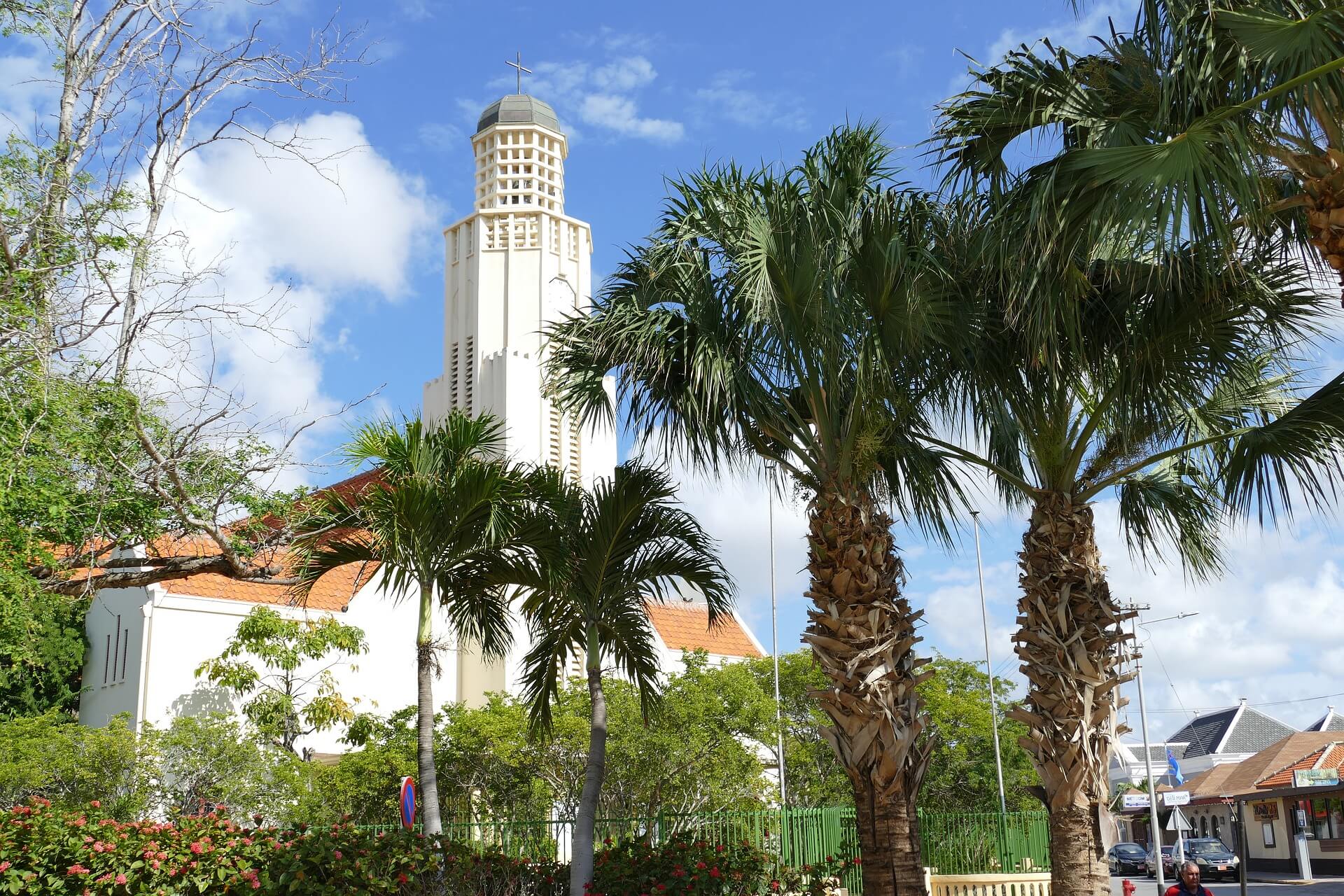

The Island of Aruba, is an island in the south mid-Caribbean, 18 miles north of Paraguana, Venezuela and 50 mile north of Curacao. It is 20 miles long and its maximum width is 6 miles and covers 69 square miles. Aruba is a riverless island and part of the Leeward Antilles. Aruba has a dry climate and is sunny throughout the year; its landscape is strewn with Cactus. Aruba has a population of approximately 120,000 and does not have major cities. Most of the population resides around two major urban areas, Oranjestad (the capital) and San Nicolaas. It is a Constituent Country of the Kingdom of the Netherlands. Humans inhabited the island since 2000 BCE and the first organized group was the Arawak Caquetio Ameridians who migrated from South America in 1000 AD. Spanish explorers, including Amerigo Vespucci, first visited the island in 1499 and claimed it for Spain. In 1513 the Spanish began enslaving the Caquetio and sending them to Hispaniola because Aruba was too dry for plantations. The Netherlands seized Aruba in 1636 in the course of the Thirty Year War. Peter Stuyvesant was the first governor and the Arawaks were allowed to farm and raise livestock. The Dutch used the island as a source of meat for their other nearby possessions. Aruba had substantial interaction with coastal South America as can be seen from similar architecture with Spanish, Dutch and Caribbean influences as well as American. During the Napoleonic Wars, the British Empire seized Aruba and had control between 1806 and1814 but ceded the island back to the Netherlands under the terms of the Anglo-Dutch Treaty of 1814. The first oil refinery was built in 1928 and several more were constructed to process crude oil from Venezuela. The refinery business became one of the largest in the world. In 1985, the oil refineries closed and tourism became a main industry for Aruba. In 1954, The Netherlands Antilles was formed bringing all Dutch colonies in the Caribbean under one Dutch administrative structure. From 1983 to 1990, Aruba received greater autonomy and seceded from the Dutch Antilles becoming a Country of the Kingdom of the Netherlands.
Aruba’s geographic isolation fostered the evolution of endemic animals including the Aruban Whiptail, Aruba Rattlesnake, Burrowing Owl and the Brown Throated Parakeet. 66% of the population is born in Aruba and 75% ethnically are Mestizo. The official languages are Dutch and Papiamento, a Creole language and English is also spoken because of the tourist trade. 76% are Roman Catholic and Aruba is a prosperous country.
Its culture varies with 92 different nationalities on the island. Dutch influences can still be seen.
Aruba cuisine is varied with its 90 different nationalities and Caribbean, South American and Dutch influences. Some favorite dishes are:
Stoba (stews)
Pastiche deep fried Pastry
Keshi Yena Casserole which is a national dish
Sopis Fish soup
Pisca Hasa Fried fish
Pan Bati a side dish known as “Smashed Bread”
Funchi side dish staples
Siboyo Tempera
Keslo sweet cakes, candy, flam
Bolos Cake
Dutch Pancakes

Keri Keri Lobster, Shrimp and Prawns

Alto Vista Chapel
Ankok National Park
Ayu and Casiban Rock Formations
Bushiribana and Balashi
Frenchman’s Pass Hoiberg
Mount Jamanota
The National Pool
Quadiriki Caves
Renaissance Island
California Lighthouse

Beaches
Sint Nicolaas
Arashi Baby
Palm Island
Rodgers
Eagle Beach

Oranjestad
Oranjestad is the capital and major cruise ship port with upscale shopping districts and historic buildings. Interesting sites include Fort Zoutman built in 1798 and the Historical Museum.

San Nicolas City
San Nicolas is rich in history, culture, and architecture. It is a center of island art with street art and murals. Interesting sites include the Museum of Industry and The Carnaval Euphoria Exhibition.

No Tour Found
No Tour Found